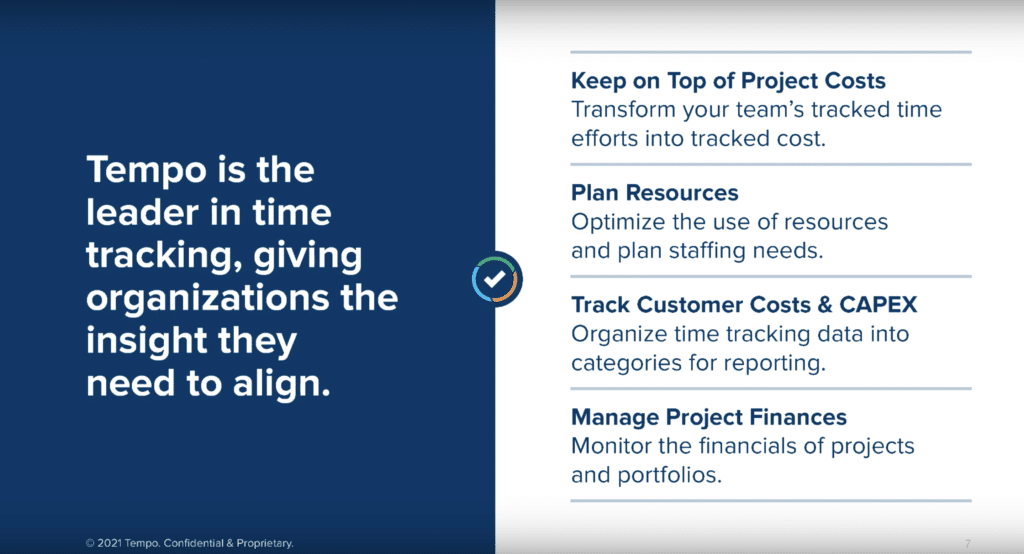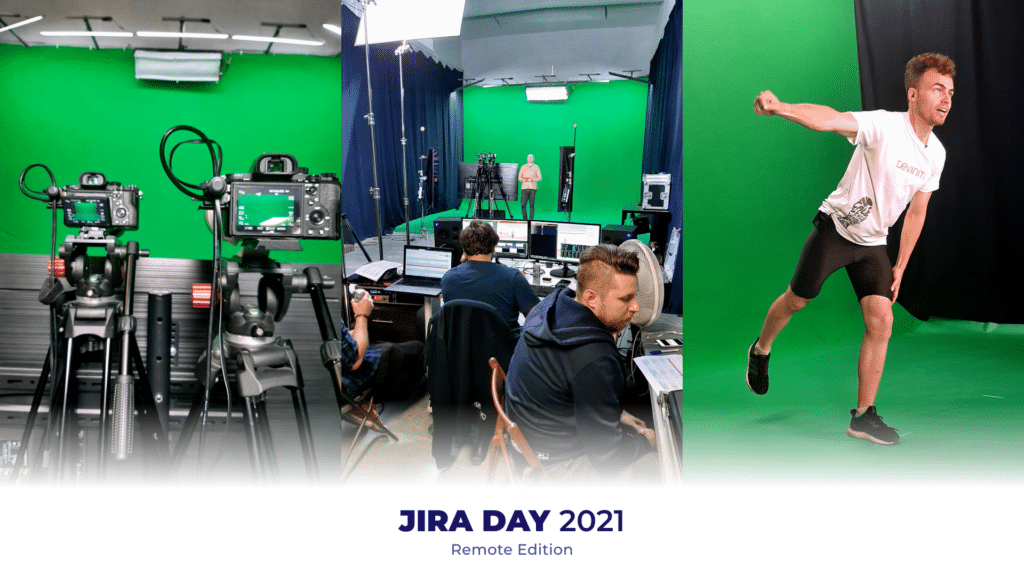Jira Day 2021 – Remote Edition. What have we learned this time?

On May 25th, 1961, President John F. Kennedy announced his goal to put a man on the Moon. Exactly 60 years later, we’ve lifted off with the 9. edition of the largest conference in the Atlassian ecosystem – Jira Day 2021. Our second fully remote edition of the event gathered nearly 1500 Jira enthusiasts, and over 700 of them were on our spaceship for at least one day. Just like in the previous years, both speakers and attendants accompanied us from places all over the world. While we all had the chance to broaden our horizons, find out more about the latest industry news, and get answers to puzzling questions, our planet, Earth, gained over 3000 square meters of a brand new forest!
Challenges and opportunities in 2021
The obstacles that the IT world is currently facing couldn’t be omitted at the opening speech of Jira Day 2021. Piotr Dorosz, Deviniti CEO, mooted the topic of hybrid work, its rising popularity, and the challenges of hybrid teams. As we found out, employees who report that culture has improved since starting to work remotely are 2.4 times more likely to report high employee engagement (Gartner).
On the other hand, remote work comes with big difficulties when it comes to IT security. Shadow IT, the phenomenon concerning employees using IT solutions without the agreement of their IT department, relates to even 80% of employees (Frost & Sullivan). How to protect the company’s data and what are the key benefits of remote work not only for the employees but also for the company? Piotr put across this issue, but also brought up the topic of key technology trends that every Atlassian enthusiast needs to know.
Before the keynote of the conference, we also had the chance to listen to how the trends described by Piotr Dorosz connect with the Atlassian Ecosystem. Bogusław Osuch, the Head of Atlassian Services department at Deviniti, in his opening speech, focused on Atlassian’s approach to today’s challenges, the company’s plans, and new solutions. We could find out more about the topic that currently concerns a big part of the Atlassian community – the journey to the cloud. The topic was also brought up by Katarzyna Pawlak, Senior Atlassian Apps Manager at Deviniti, during her speech: “Everything you always wanted to know about migrating apps to cloud but were afraid to ask”. Last but not least – Jira Service Management – the new view on Jira Service Management. What’s changed and how teams like marketing, HR, finance, and design will benefit from this development? Bogusław resolved our doubts and spoke about primary benefits to all organizations coming from the usage of JSM.
The ability for teams to pivot
Continuing the thread concerning current challenges that the majority of companies has to face, we’ve gone forward to our keynote speeches from our Atlassian guests: Josh Frank, the Principal Product Marketer on the Jira Software Cloud team, and Kelly Drozd, the Product Marketing Manager on the Jira Software team.
In today’s world, the struggle that hits many companies doesn’t recall the issues that they had to face even a few years ago. But these unprecedented times don’t require completely new techniques. Josh took us on a journey through agility. Now, the pace of change in business is faster than ever before. In 2020, over $300 billion was invested globally in startups. Not all of these will survive. In fact, it’s predicted that 75% of the S&P 500 will be replaced by 2027. Why do some businesses face so many challenges and others have their best quarters to date? The answer is Agile. What’s important, now is high time for teams that don’t build software to start benefiting from this Agile approach. The key difference between those who have stuck in their previous habits and those who had the confidence to maneuver and look for new opportunities.
This competitive advantage was also brought up by our next keynote speaker, Kelly Drozd. Kelly continued the topic of the Agile values that are now beneficial not only for the software teams but for the whole company. She also guided us through her agile journey and showed how the tools we use make a real difference. Of course, there was a place for Atlassian tools in this journey, and we had the chance to find out how Jira Software and Confluence became one organization’s backbone.
We can clearly see a trend of implementing the Agile methodology in larger and larger companies. Developing the course of successive iterations not only speeds up and systematizes the work of our team but also helps us make sure to detect as many bugs and issues before our application meets a bigger audience. But even the best approach needs a proper tool that will clip all of our project’s elements together. Peter Weingärtner, the Sales Consultant at Seibert Media, walked us through Agile Hive, an app for Jira Software, known for its simplicity. We found out how to avoid one of the Jira challenges that may have restrained our work before – its limit for hierarchical layers to issue Jira epic and project. Agile Hive’s team found the solution to this issue and now presents how to easily implement the Scaled Agile Framework in the organization.
As agile plays a strategic role in more and more organizations, this topic was also covered by our next speaker, Marek Lewandowski, Product Implementation Consultant at BigPicture. What have we found out during his lecture? Although 95% of companies use agile development methods, this approach is still popular mostly in only two areas: software development and IT. The positive information is that a growing number of companies saw the potential in agility which can help them react to the changes or problems faster and more effectively. Marek, in his lecture, brought us through managing massive, diverse portfolios of initiatives with Jira and BigPicture.
Squeezing the most out of Confluence
How to establish efficient process management in a company for a long period of time? Wiki-based quality management using Confluence turned out to be a great solution for the German IT company, Kiwigrid. Franziska Wende, Product Marketing Manager at Commurando, during her lecture talked about the benefits of using a wiki for process management. Keeping central space for all processes, taking part in continuous improvement, and having consistent documentation that all the employees can use – are the main benefits of building a wiki in a company. Franziska walked us through the problems that Kiwigrid faced during the process of starting their SOP and taught us how to create our individual fitting SOP with the help of Commurando’s apps and solutions.
Next, Matt Reiner, Customer Advocate at K15t told us more about creating a help center in Confluence. Why use Confluence, when there are dozens of help center tools? Matt left no doubt, as he took us through the typical help center journey. We could find out that Confluence isn’t, in fact, just a tool for posting content. It promotes better collaboration between teams, as well as operates as a single source of truth – a place where everyone on the team (or company) can have access to. If you’d like to know more about creating an integrated help center in Confluence, Matt has answers to all your questions.
When you need a hand – automation
Reducing manual tasks is the goal of pretty much everyone – we need it outside work, and, even more, we need it while carrying out our duties. According to McKinsey, 31% of businesses have fully automated at least one function – and this number increases year by year. Our next speaker, Laura Campbell, Marketing Project Manager at Elements, spoke about automation in the line: support team – software team. In her presentation, she showed how to easily copy, link, and sync issues from one Jira project to another, and make the life of both customers and employees easier with just one tool: Copy & Sync.
Who doesn’t know the struggle of being misunderstood in a foreign country? When different languages play a major role in the business situation, the issue becomes even more complicated. Björn Döhler, co-CEO at Resolution, knows just a solution for this problem. How to build language automation into ITSM processes, and how will our team benefit from it? Björn, during his lecture, showed us a resolution on how any agent can talk to any customer without a language barrier, and, most importantly, without cringy translations from using translators by hand.
Plan your work better – reporting
Planning your resources, tracking the cost of each project or a customer, and finally – stay up to date with your team’s workload – it’s all possible thanks to effective time tracking. Although for some tracking your every tiny task may seem like a waste of time itself, in reality, as practice shows, it’s just the opposite. Gudrun Fema Olafsdottir, Channels Account Executive at Tempo, showed us two case studies with using Tempo for billable client projects and tracking R&D work.
Solid reporting needs a nice environment. Janis Plume, BI Consultant at EasyBI, walked us through building advanced reports and dashboards using only one tool. Table view, bar-line, pie, gauge, Gantt chart? All of these can visualize different types of data more lucidly and clear. And, of course, automation must be the main character here – instead of manually typing the data, you can easily import it from Jira (& integrated apps), Confluence, Google Sheets, or Excel, create reports, and publish them.
Finally, applications
What would be Jira Day without a solid portion of applications? As a cherry on top of our event’s cake, here they are: our speakers’ views on the applications from the Atlassian ecosystem. We’ve launched this section with the two simultaneously running presentations: Janis Plume’s Ask Me Anything Session and Suhail Wani‘s (Associate Staff Engineer at Nagarro) lecture on implementing the manager approval functionality for Nagarro. Our next speaker, Christian Reichert, CEO and founder of Resolution, presented the top 10 missing features in on-prem Atlassian user management. During his charismatic presentation, we’ve learned about areas of improvement that can be implemented in order to increase usability while achieving the same level of security.
Jira Day 2021 behind the scenes
This year, we’ve had the second chance to experience Jira Day fully remotely. The reason behind it was the still ongoing pandemic but also the great success of the previous year’s edition. In 2021, we’ve decided to take Jira Day to another level and move from our little recording room in our office to a professional studio. We’ve also decided that the second remote edition doesn’t have to require attendance in front of your computers. That’s why we’ve moved the conference right into the Jira Day application to provide you with the lectures and chat also on your smartphones.
Encouraged by your kind reception of last year’s AMA sessions, this time, we’ve prepared nine time slots for your questions to our experts. There was also one lively debate during the ITSM panel discussion.
22 hours of the conference is a lot – even during the most engaging lectures, you may feel the need to stand up and move a little. We know the pain – that’s why we were joined by our Health Ambassador, Maciej Ogrodnik, who took care of our condition and performed a set of exercises between the lectures.
1 attendant means 1sqm of forest
T-shirts, pens, and notebooks – sure, it’s nice to receive them during the conferences. But is the 10th fabric bag with a different logo really that necessary? This year, we’ve decided to do something different. Although in Deviniti we shoot for the stars and like cosmic references, we deeply care for issues that concern our planet, Earth. That’s why during Jira Day 2021 we joined forces with the Las na zawsze charity and decided to plant 1 square meter of forest for every event attendant. What’s the result? This fall, our team will plant 3000 square meters of forest. Why 3000? Our Deviniti Cares foundation doubled the number of attendants to help the planet even more.
Thank you to all the astronauts who took part in this cosmic journey: the speakers, our host Sylwester Giemza, technical and marketing teams, and – of course – all of you who decided to be with us during these 3 days. Task yourselves and we’ll see you soon at Jira Day 2022!
Last but not least, we want to thank our sponsors and partners for contributing to this year’s edition: eazyBI, TEMPO, Software Plant, K15t, Resolution, Communardo, Seibert Media, Meta-inf, Atlas Authority, Old Street Solutions, Deiser, Elements, Almworks, Yasoon, Comala Technology, Refined, Spartez, Adaptavist, Decadis AG, AppFox, Lucid.
Read more about other events:











